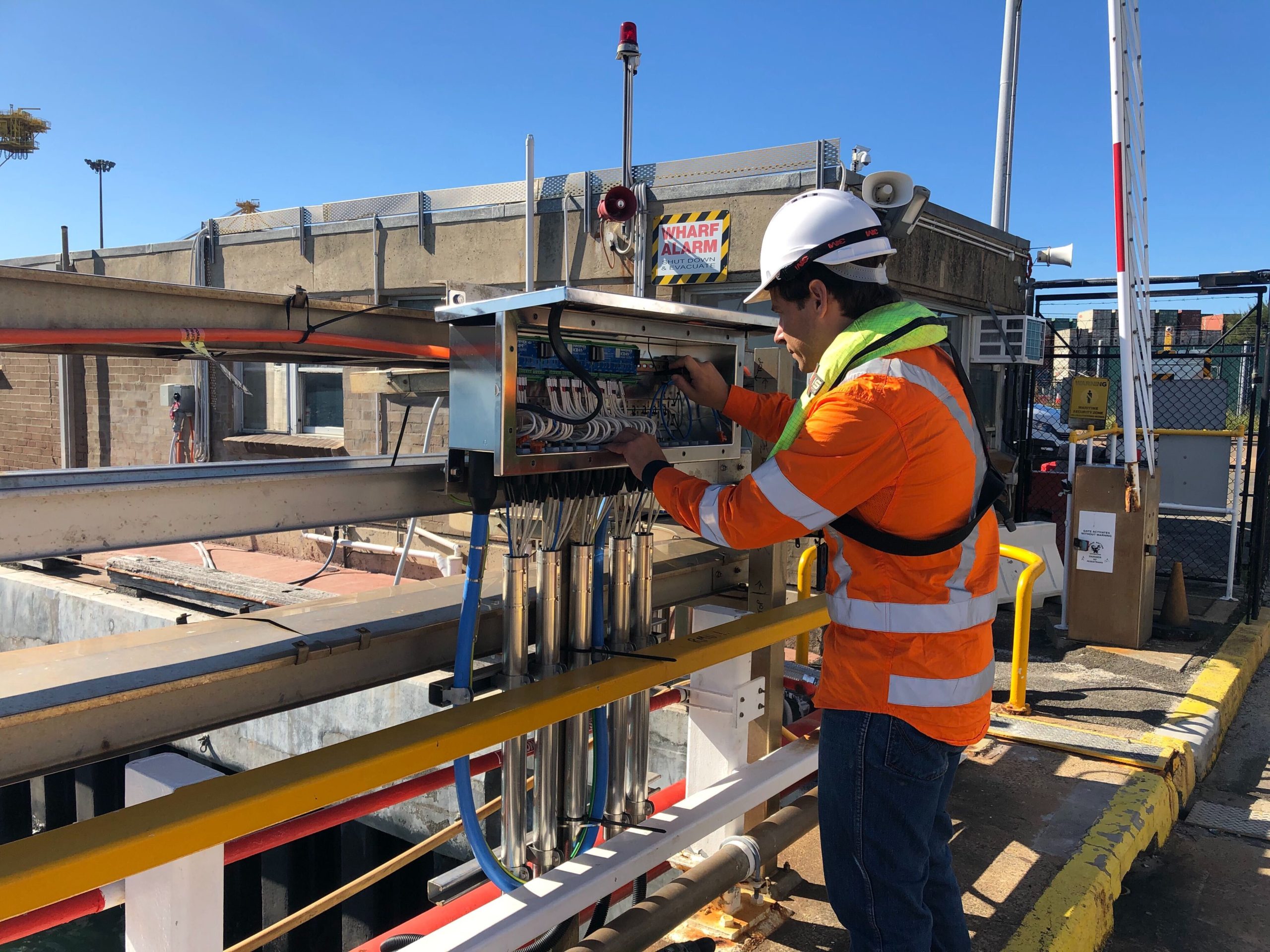Tackling corrosion at NSW Ports

Intrinsically safe cathodic protection systems for hazardous environments in one of Australia’s key ports.
When NSW Ports embarked on a two-year program to rehabilitate the structures and combat corrosion levels at its Bulk Liquid Berth 1 (BLB1), it commissioned Melbourne-based consultancy Infracorr to deliver a bespoke cathodic protection (CP) system. Designing the system presented several challenges because BLB1 houses hazardous gas, petroleum and chemical pipelines that could be at risk of ignition if exposed to unsafe levels of voltages and currents. To safely deliver the system, the consulting firm engaged cathodic protection specialist Omniflex to support the hazardous area and remote monitoring aspects of the CP system design.
Over the last decade, reports have established that chlorine-induced corrosion is affecting some of the major structures at NSW Ports, including Sydney Harbour and Port Botany, Australia’s largest container port. NSW Ports commissioned Infracorr to design a CP system for use at BLB1, which is located at Port Botany and houses hazardous gas pipelines. The project also included the repair of defective concrete structures, which were suffering from the effects of corrosion and concrete spalling in the many pre-stressed beams and headstocks of the various bridges and catwalks at the port.
“The system needed to be designed to allow for tight control of the currents and voltages used across the site for two key reasons,” explained the project consultant. “First, Port Botany is NSW’s main bulk liquid and gas port and BLB1 is a key part of this facility, playing an active role in loading and unloading volatile liquids and gases. These hazardous materials are present in the environment on an ongoing basis, meaning that any stray sparks caused by excess voltages and currents could become an ignition source for a major fire or explosion. “Secondly, because many of the structures present are constructed using pre-stressed concrete, it was extremely important that all electrical currents applied were carefully controlled to avoid structural damage caused by over protection.”
“To control corrosion in steel it is necessary to give it a more negative electric potential than its environment by 800mV. However, if the charge applied results in the steel being more than 1V negative than its environment, hydrogen embrittlement can occur, leading to failure of the steel and long-term structural damage that is not easily repaired,” concluded the consultant.
“One of the big technical challenges for the project was that there is no off-the-shelf CP system available that has certification for use in zone 1 classified hazardous areas,” explained Ashley Rangott, Asset Manager at NSW Ports. “This meant that we had to go through the process of designing a bespoke system that met the cathodic protection objectives, including dealing with the challenge of prestressed concrete, and a system that could be certified to meet the necessary requirements under AS60079 regulations.”
The system designed for use at BLB1 by Ian Godson, Director at Infracorr, was a hybrid CP system that combines the properties of both passive galvanic and impressed current cathodic protection (ICCP). It works by inserting specially designed anodes directly into the structure in a matrix. A voltage is applied to force salt migration from the steel to the anode and passivate the zone. When the zone is sufficiently charged, the power source is disconnected and the sacrificial anodes are left to operate galvanically, providing passive protection to the structure.
“The decision to go with a hybrid CP system was jointly made between NSW Ports and the project consultants. The hybrid system reduces the ongoing risk of hydrogen embrittlement on prestressed concrete elements that a standard ICCP system presents,” added Rangott.
The system uses remote monitoring technology to provide asset managers with ongoing reassurance that systems are operating as intended and corrosion levels are under control. To deliver this, Godson requested the assistance of Omniflex to advise on the hazardous area and remote monitoring aspects of the design.
“Because of the low currents required to meet the prestressed steel and hazardous area limitations, the hybrid CP system required an initial power-up phase of three to four months before the external power source was disconnected and the system left to operate galvanically,” explained David Celine, Managing Director of Omniflex.
“The system comprises of nearly 35,000 embedded hybrid anodes that were installed in the structures at BLB1 and is designed to control corrosion for up to 50 years. Because of BLB1’s ongoing operational nature, extra controls were put in place to manage activities across the site during the system installation phase.
“Because this was the first large scale implementation of hybrid CP used in a working hazardous area anywhere in the world, some components needed certification for the design to meet the requirements of AS60079 as an intrinsically safe certified system. Most countries have their own certification process so it can be costly and time-consuming to get installations like this one certified as being intrinsically safe,” added Celine.
“In this case, the hybrid anodes were sourced from CP Technologies in the UK, Omniflex’s technology is manufactured in South Africa and the project is in Australia, so navigating certifying bodies was challenging. However, the design was approved and certified as being intrinsically safe for use in areas classified as zone 1 hazardous for gas group IIB in the BLB1 project, where there is the potential for exposure to volatile, flammable substances,” continued Celine.
“System performance and corrosion levels are continuously monitored 24/7 using 24 remote monitoring units that are situated throughout the site, each with the capacity to monitor 16 structures. Crucially, these works ensure that the integrity of BLB1 is maintained, and the berth remains reliable and available to handle NSW’s growing bulk liquid trade volumes for the next 50 years,” concluded Celine.
“There were no major issues obtaining the required IEC/AS60079 approvals for the system because there was a competent team of people and companies involved in the project,” added Rangott. “Because the approval process was completed outside of Australia, this slightly increased lead time but was not a major issue. Communication and business dealings across countries through various companies and suppliers did not present a challenge.
“Omniflex’s systems are all high quality, suited to our unique harsh marine environment, and have met our quality expectations for this high-end system. The knowledge that Omniflex brought to the project ensured that the monitoring and control system was procured and operated to a high level and to our expectations,” concluded Rangott.
Stay in touch with us on LinkedIn! 
Copyright © 2020 Omniflex (Pty) Ltd, All rights reserved. For further information, please contact us on: sales@omniflex.com or visit our website at www.omniflex.com

Comments
Display comments as Linear | Threaded